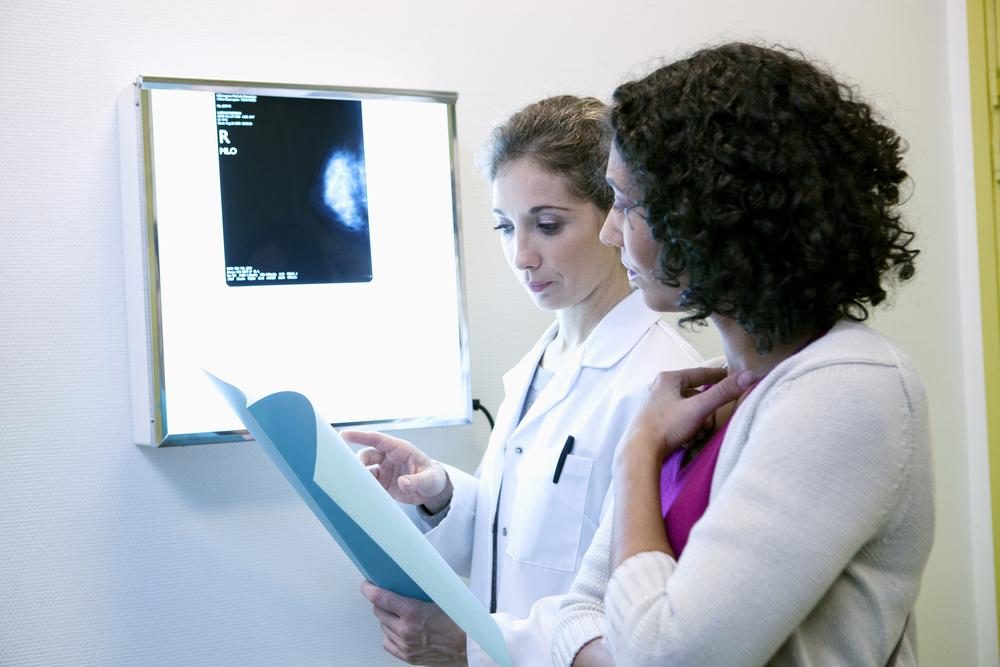Stages and Signs of Breast Cancer
Breast cancer starts as cell growth in the breast tissue. Depending on its stage, the condition may result in various symptoms and other complications. The breast cancer staging system is based on three main factors: invasiveness, spread to lymph nodes, and spread to other parts of the body. It uses numbers 0-4 to better identify features of a particular cancer. Better knowledge about the type and its symptoms will help an expert offer appropriate treatment.

Stages of Breast Cancer
Stage 0
This classification is used to describe non-invasive breast cancers, like DCIS.
Stage 1a
This classification describes invasive breast cancer where the tumor is at least 2 centimeters long and remains contained in the breast, with no evidence of spread to the lymph nodes or other tissues.
Stage 1b
This classification describes invasive breast cancer where there are small 0.2-2 millimeter groups of cancer cells found within the lymph nodes. This stage can present with or without a tumor in the breast.
Stage 2a
This classification describes invasive breast cancer where there are medium (>2 millimeters) sized tumors found within axillary lymph nodes. This stage can be present with or without a tumor in the breast. However, if there is a tumor in the breast that is larger than 2 centimeters, but smaller than 5 centimeters and no spread to the axillary lymph nodes, this that tumor could also be described as stage 2a.
Stage 2b
This classification describes invasive breast cancer where the tumor is between 2-5 centimeters AND there are small (0.2 millimeter-2 millimeter) groups of cells found in the lymph nodes. It also describes a tumor larger than 5 centimeters, with no axillary lymph node spread.
Stage 3a
This classification describes invasive breast cancer where the tumor is larger than 5 centimeters and smaller tumors can be found in numerous axillary lymph nodes near the breastbone. It can also be used to describe cancer when no tumor is found in the breast, but is present in 4-9 axillary lymph nodes.
Stage 3b
This classification describes invasive breast cancer where the tumor is any size, but has spread to the chest wall, and several lymph nodes. This includes up to 9 axillary lymph nodes, or any number of lymph nodes near the breastbone. Additional features of this stage include reddening of the breast skin and swelling of the breast tissue.
Stage 3c
This classification describes invasive breast cancer where the tumor has spread to 10 or more axillary lymph nodes, including those near the breastbone and collarbone.
Stage 4
This classification describes invasive breast cancer where the tumor has spread to other bodily organs, including the brain, distant lymph nodes, the liver, or the skin. Other terms for this stage of breast cancer includes “advanced” or “metastatic”.
Signs and Symptoms of Breast Cancer
Breast cancer is most commonly identified by finding a small lump or mass in the breast during a self exam, by a partner, or after a medical breast exam. Lumps that are painful, moveable, and soft are most often benign while lumps that are painless, hard, and fixed are more likely to be cancer. However, even lumps that are soft, round, or tender can still be early forms of the disease and should be immediately investigated by a medical professional.
Other than a lumps, unusual changes to the normal breast appearance or feeling can be a symptom of breast cancer. These include swelling of the breast, breast pain, nipple irritation or pain, reddening of the skin due to irritation, thickening of the skin around the nipple or breast, and unusual nipple discharge. All of these symptoms can be signs of diseases other than breast cancer, so having them evaluated by a medical professional is needed before the diagnosis of breast cancer can be made. Pain for example is more common in benign conditions such as pregnancy, puberty, PMS, and fibroids.
Early Stages of Breast Cancer
- Painless lump
Late Stage Symptoms of Breast Cancer
- Pain
- Swelling of breast
- Nipple irritation
- Redness of skin
- Unusual nipple discharge
- Thickening of the skin around the nipple or breast